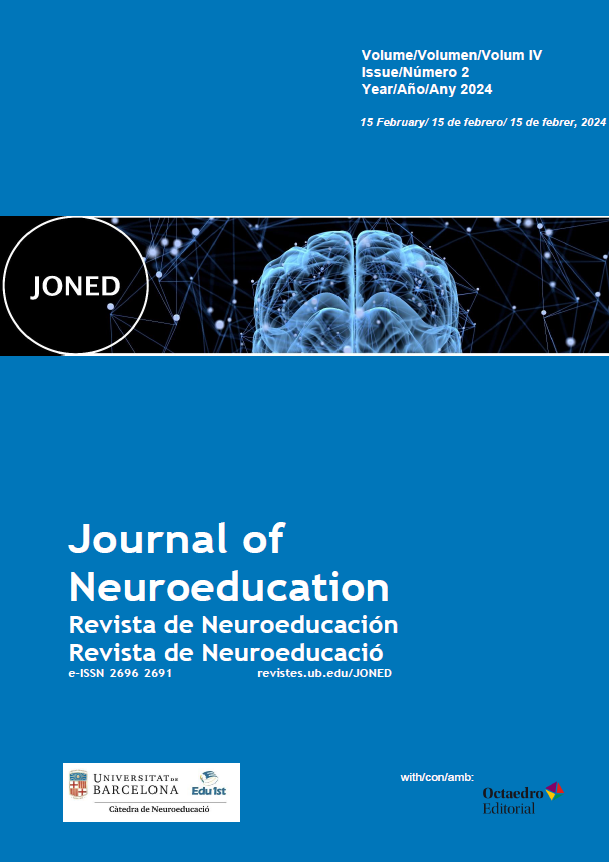Model neuroeducatiu de canalització primerenca per a nens amb problemes d'aprenentatge
Resum
In this article, in a beautifull way we explain what a neuroeducational model is to young scientists, helping them to understand how their teachers and neuroeducators use it as a bridge to support them when they have learning problems and neurodevelopmental disorders.
Referències
Games Eternod J, Troconis Trens G. Introducción a la pediatría de Games. Méndez Editores; 2010.
Sadok VA, Sadock BJ, Ahmad S. Manual de bolsillo de psiquiatria clinica. Baltimore, MD, Estados Unidos de América: Wolters Kluwer Health; 2018.
Al-Mahrezi A, Al-Futaisi A, Al-Mamari W. Learning Disabilities: Opportunities and challenges in Oman. Sultan Qaboos University Medical Journal [Internet]. 2016 May 15;16(2):e129-131. Available from: https://pubmed.ncbi.nlm.nih.gov/27226902/
Döhla D, Heim S. Developmental Dyslexia and Dysgraphia: What can We Learn from the One About the Other? Frontiers in Psychology [Internet]. 2016 Jan 26;6(1664-1078). Available from: https://www.frontiersin.org/articles/10.3389/fpsyg.2015.02045/full
Bisaz R, Travaglia A, Alberini CM. The Neurobiological Bases of Memory Formation: From Physiological Conditions to Psychopathology. Psychopathology [Internet]. 2014;47(6):347–56. Available from: https://www.ncbi.nlm.nih.gov/pmc/articles/PMC4246028/
Descàrregues
Publicades
Número
Secció
Llicència
Drets d'autor (c) 2024 Paola del Rosario Flores-Rodríguez

Aquesta obra està sota una llicència internacional Creative Commons Reconeixement-NoComercial 4.0.
Els autors que publiquen en aquesta revista accepten els següents termes:
a. Els autors conserven els drets d’autor i d’organisme a la revista el dret de la primera publicació
b. Els textos que es publicaran sota una Llicència d'Atribució No Comercial Creative Commons permeten altres activitats del treball, sempre que inclogui un reconeixement de l’autorització del treball, la seva actualització inicial en aquesta revista i els termes de la llicència, i no se'n faci un ús comercial.



